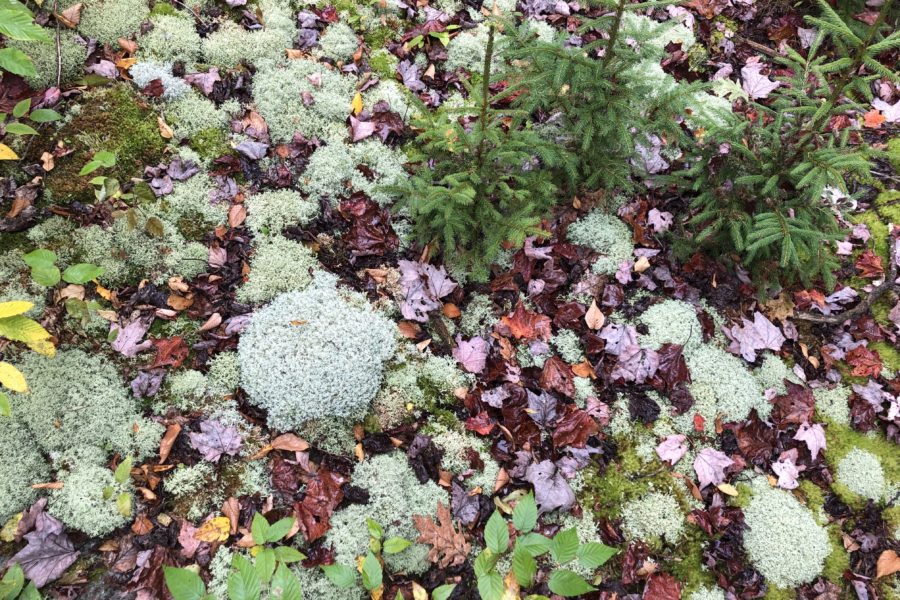It’s not often you consider the rocks under your feet are possibly four hundred million years old.
The shale and limestone on top of this Pennsylvania mountain are surrounded by an abundance of plant diversity even more glorified now in autumn, from red spruce to alder to winterberry holly and mountain laurel and teaberry. Lichens and club mosses fill in between a buoyant, spongy layer of recently fallen leaves, while those that remain fast on the stipule above in the canopy hiss at a passing front. Wind-battered hemlocks lean forward against the weather to come from weather passed. And then the swampy bald falls away on all edges to a steep and rocky forest of birch, beech, oak and maple, tucked into the glens rising out of the creek far below.
On the faint logging road here we come across large black bear prints pressed deep into the cold mud. Clear, sharp claws radiate from the round toes. About a size thirteen and a half. Through the dank fern meadows that flank the balds I can hear the searing flick of the timber rattlesnake’s tail, the shattering howl of the coyote.
As the mist and fog rolls in on the coming dusk, I’m intimidated by the vast wildness out here, by the pure, incomprehensible passing of time. And I can’t help but to think of Thoreau:
“There is something even in the lapse of time by which time recovers itself.” (Heinrich, 105).





Leave a Reply
Your email is safe with us.